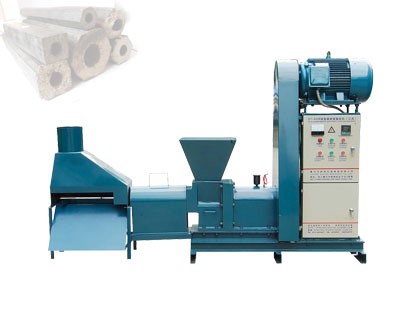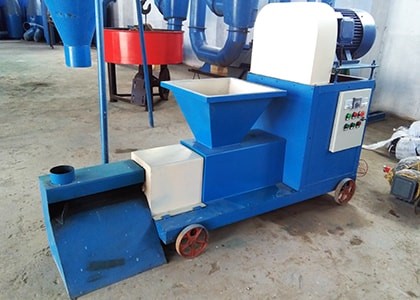There are various types of briquetting machines available, all with their own working principles, operating at variable pressures and suitable for use with different materials. So how do they work?
The briquette machine is used to convert waste powder into a usable form, which can help improve the condition of the powder, making it easy for transportation, storage and more useful for further use.
The briquette system is capable of handling all types of materials with the appropriate size and humidity.
The briquette machine always works with a binder because it requires a binding effect to get enough strength for the finished briquette. Biomass and industrial waste differ from each other because of the binding source.
Screw type
Screw type briquette machines use augers to press raw materials and can be equipped with or without a heating system to produce briquettes.
A heating system is a special design for those who handle briquettes with materials containing lignin, lignin can be found in biomass. So, heating systems are usually used for biomass briquettes. Binders are always needed when making briquettes with screw type briquettes.
The suitable material is fed to the hopper and then conveyed by a screw inside the briquette machine. the rotating screw takes material from the feed port and compresses it to the die which helps build up the pressure gradient along the screw.
Because the screw briquette machine works with not too high a pressure, the binder is always needed to form briquettes. Equipping it with a heating system will help biomass material to melt internal lignin and turn it into a high-performance binder. In addition, other materials also work with these briquettes such as coal, charcoal, etc. These ingredients must be mixed with a binder to get the form of briquettes.
Hydraulic type
This type of hydraulic works with a hydraulic pump station that supplies enormous pressure. Because of the high pressure, almost all materials can become briquettes with this system. Metals that reflect plasticity under high pressure, are very suitable for making briquettes by hydraulic type briquette machines.
The process of producing briquettes occurs where the material is inserted, under very high pressure. This causes their plasticity and makes them tie together as a block.
This type of hydraulic system takes a long time to maintain pressure on briquettes, this prevents short-term material deformation and will cause special heating for materials such as sawdust to melt internal lignin, making briquettes with higher strength. For more information on Briquetting Machines, visit https://iwmachines.co.uk/en/products/briquetting-machines/

Piston type
The piston type uses rotational power from a mechanical device or a push from the hydraulic cylinder to reply to the piston, moving a ram to form a compressive force to form the material into briquettes.
Roller Type
The roller press works with two rollers that rotate close to the same speed but in the opposite direction. Two rollers, with the same width and diameter, have holes on the surface. When they move, the same two holes on different rollers will coincide at the intersection of the midline and the briquettes will be pressed there. With different pressure requirements, roller presses can be designed for several types.

